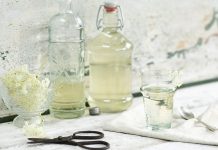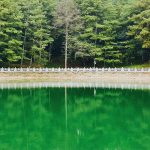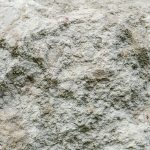With the arrival of spring, warmer temperatures begin, but the dreaded processionary caterpillar (Thaumetopoea pityocampa) also tends to come in each spring season. This caterpillar, which is usually found in areas where there are pine trees and is very common in all types of parks and environments in the Mediterranean area, can be dangerous due to its fine stinging hairs. Because of this, when the processionary season approaches and if we have pine trees in our garden or surroundings, it is necessary to be prepared to keep it at bay. Biological control of the pine processionary is the best option, but traps and some insecticides can also be used.
If you want to learn the best home remedies for the pine processionary, join us in this article from EcologíaVerde in which you will find a guide full of tips and effective remedies.
You may also be interested in: How to combat powdery mildew with home remedies
What is the pine processionary and its characteristics
Before we go into detail about home remedies for the pine processionary, we want to talk more about it so that you get to know it well. This is the worm phase of the species (Thaumetopoea pityocampa). These are the main characteristics of the pine processionary:
- The processionary is actually a nocturnal butterfly, which in its adult phase does not represent any danger to humans or other animals. However, this insect is much better known for its caterpillar stage which, in addition to attacking plants, has stinging hairs and is dangerous for us and other animals, such as dogs and cats. Here you can learn more about the differences between diurnal and nocturnal butterflies.
- The processionary gets its name from the fact that, when the caterpillars descend from the pine tree, they tend to form a characteristic procession as if it were a single caterpillar of extraordinary length, which advances making little sesses.
- It usually infests the pines of central and southern Europe, as well as those of North Africa and the Middle East. Their tree of choice is black pine, but other types of pine and even cedars and firs are not safe from this pest.
- It appears when temperatures rise and there is less rainfall, when the adults lay their eggs. A month later the caterpillars hatch from the eggs, and in another month they already have their stinging hairs.
- The caterpillars form nests in trees to spend the winter protected. The nests of the processionary caterpillar are easy to identify because they look like tangles of gray or whitish cotton on the branches or trunk.
- When the heat arrives again, the caterpillars descend in their characteristic procession to look for where to make their buried chrysalises. This usually happens with the arrival of spring, but global warming contributes each year to advance the process further.
- The stinging hairs of the processionary are especially dangerous for dogs, cats and other naturally curious animals, as well as for children, who can even ingest these hairs. Of course, in adults they also produce stinging effects, but we can be aware of the risk and avoid it more easily.
- One of the symptoms of a pine processional caterpillar bite is theurticaria reaction caused by the hairs. It can range from mild to very serious, and can be a medical emergency, depending on the number of these and whether the person or animal affected has an allergy or not. Because of this, it is necessary to act against this pest as soon as possible and go directly to the doctor or veterinarian in case of suffering its attack, which for them is simply to defend themselves from someone who gets too close.
How to combat the pine processionary
There are different ways to combat this pest, such as with repellents and insecticides for the processionary or even by resorting to phytosanitary products to combat the pine processionary. Here, however, we are going to focus on home remedies, such as cheating and direct action:
- Biological control of the pest.
- Hand picking and trapping.
- Soapy water for dishwasher.
- Cigarette butts or tobacco ashes.
If you have this pest in your garden or orchard, do not hesitate to use these remedies to eliminate the processionary caterpillar, as the bite of its stinging hairs can be serious. However, keep in mind that in natural areas you should not act to remove or eliminate them, it is forbidden and they are in their natural environment, so simply, if we see them we can move away with enough space.
Biological control of the pine processionary caterpillar is the best remedy
In order not to directly kill the caterpillars or damage the environment, when there is a pest we can control it taking into account its natural enemies. For the biological control of the pine processionary, in the affected area it is necessary to increase the population of animals that feed on them in their different phases, such as:
- Ants
- Wasps
- Cicadas
- Bat
- Dormouse
- Blackbird
- Saithe
- Cuckoo
- Blue
- Hoopoe
- Magpie
- Crow
In this other article we explain everything about Biological Pest Control: what it is, advantages, disadvantages and examples.
Hand Picking and Homemade Traps for the Pine Processionary Caterpillar
This is one of the simplest methods and also the most efficient when you can’t opt for biological control. However, we have already said that the hairs of these caterpillars are stinging and dangerous, so it is necessary to protect yourself properly with gloves and goggles. In these links you can get this material:
- Gardening Safety Gloves
- Gardening Safety Glasses
If you have located the nests in trees or bushes, one option if we prefer not to kill them, is to take the maximum possible care when picking them, always with protection, and release them in a natural pine area, far from our property where they pose a danger to us, but we must bear in mind that it must be an area where there is permission from the authorities relevant of the locality to release them. Then we have to clean the area around our pines and the material we have used as well as possible.
To be able to catch them, a good option is homemade traps for the processionary caterpillar, such as this one that is reusable. Here you can buy it:
Soapy water
This is also one of the home remedies for the processionary as simple to make as it is effective, as well as being useful against a large number of common pests. To use soapy water against the processionary, you will also have to wear gloves and goggles and follow these steps.
- Add the soap you use to wash dishes in a spray bottle with water and stir well.
- Spray your plants affected by caterpillars or nests abundantly, for which you may need to prepare several bottles or a drum depending on the amount of pest there is, and the caterpillar pest itself will leave the area, as it is harmful to them.
- Repeat the treatment twice a day, at dawn and dusk, until the pest is gone.
Processionary caterpillar repellent with tobacco
Tobacco remnants are also very effective in keeping the processionary away. Follow these steps to prepare a repellent for the processionary with tobacco:
- If you smoke or someone else is around you, store your cigarette butts or tobacco ashes and add them to a water base in a spray bottle.
- You can also use whole cigarettes directly, which you should boil with water.
- Spray the mixture on the affected trees and shrubs, even if you do not overdo it or make it too concentrated or you could harm the pines and other trees or plants.
Now that you know these remedies for the processionary caterpillar, in this other article from EcologíaVerde we explain more about Home remedies to eliminate caterpillars from plants.
If you want to read similar articles to Home remedies for the pine processionary, we recommend that you visit our Garden Care category.










